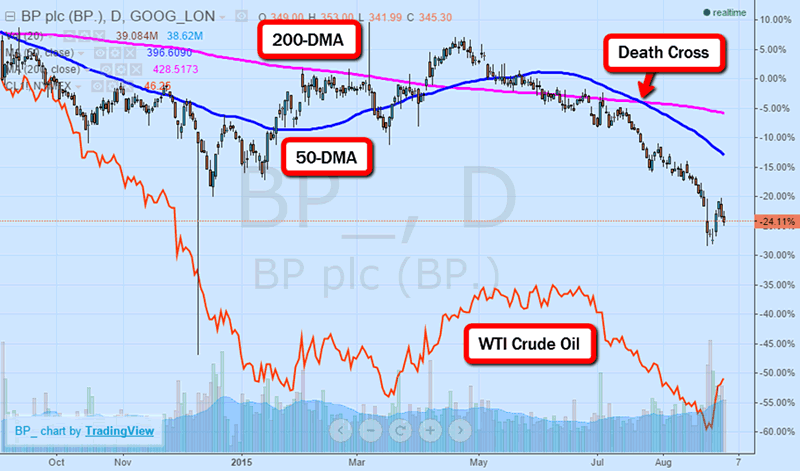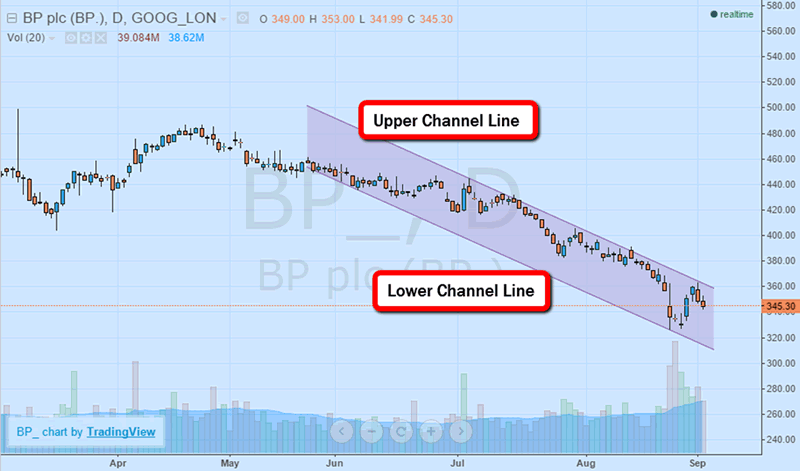BP Oil Company Moves past Mistakes But Still Feeling Price Pinch
Companies / Oil Companies Sep 03, 2015 - 02:48 PM GMTBy: AnyOption

 Major oil Company BP (LSE: BP) has found itself in an uncertain position the past few years. Under pressure from both outside and within, the company has managed to stay relatively stable considering the shakeup in the industry. Now, despite the current economic downturn facing the oil industry and a disappointing second quarter, the oil giant is finally able to look more towards improving future prospects. A recent settlement in their ongoing case with the United States Federal Government and state governments as well as a relatively solid balance sheet paired with their diversified corporate structure have combined to create a potentially positive long-term outlook for investors seeking long-term potential. However, the short-term outlook must acknowledge the inherent industry risks.
Major oil Company BP (LSE: BP) has found itself in an uncertain position the past few years. Under pressure from both outside and within, the company has managed to stay relatively stable considering the shakeup in the industry. Now, despite the current economic downturn facing the oil industry and a disappointing second quarter, the oil giant is finally able to look more towards improving future prospects. A recent settlement in their ongoing case with the United States Federal Government and state governments as well as a relatively solid balance sheet paired with their diversified corporate structure have combined to create a potentially positive long-term outlook for investors seeking long-term potential. However, the short-term outlook must acknowledge the inherent industry risks.
The Fundamental Picture
During their second quarter earnings call, BP presented a disappointing quarter to investors that missed estimates, driving shares down and shaking investor confidence. The company reported a 64% year over year drop in their replacement cost profit for the quarter to $1.3 billion, while their upstream margins saw a heavy contraction due to the falling price of oil. This resulted in a sharp erosion of BP’s exploration and production earnings by 89% year over year to an underwhelming $500 million. The one bright spot in all of this, however, was that the company’s downstream division saw an excellent 154% increase in earnings even though it was largely offset by upstream losses.
The oil giant reported a drop in free cash flow from $7.9 billion to $6.3 billion in its latest figures. BP shares have reflected this, dropping over 25% in the last twelve months and current trading just shy of 52-week lows. BP has also announced several one-off expenses, including a $270 million restructuring charge, adding to the total $1.5 billion in restructuring charges through the end of 2015. The major hurdle though was the recently handed-down settlement in the Horizon Deepwater oil spill, which will cost the company $18.7 billion over 18 years for which they have already taken a pre-tax charge of $11 billion.
These disappointing results can be seen as more of a speed bump than a sign of things to come for BP. Despite their heavy contractions in revenues and replacement cost profit, these are at least partly associated with external factors and one-off situations that can be corrected in the second half of 2015 and beyond. The first, and one of the biggest problems for BP in the past few years was the Horizon Deepwater oil spill. In a positive sign for the future, the company’s settlement finally provides clarity for investors and shareholders moving forward. In spite of the $1 billion that will be on the books for the next 18 years, the cost can now be included into the operations, instead of hanging over the company indefinitely. BP has also not been immune to the current downturn in global oil prices.
With Brent crude averaging 44% less per barrel year over year in the second quarter, and global prices hovering around that mark, the current surplus in supply doesn’t seem to be slowing down. BP has shown the resilience to survive economic downturns and recessions, surviving the market crash in 2009 and managing through economic crises earlier in the 20th century. BP has continued paying yearly dividends on shares that trade in US markets despite the current economic climate, with their dividend yield currently sitting at 7.45%. UK listed shares has seen the dividend yield for the last twelve months at 6.30%. Overall, the company hasn’t shown signs of dropping its American dividends, and doesn’t seem inclined to.
The Technical Take
A deeper look at the charts show that BP has not been resilient to the downturn in crude oil prices, with a relatively strong correlation to the direction of Brent and WTI. Despite the oversupply conditions that created the weakness in prices, BP has managed to outperform the drop, falling less year over year compared to the price of Brent. More concerning however is the “death cross” formation that emerged in the shares back in July which saw the 50-day moving average cross the 200-day moving average to the downside. This is a highly bearish formation and with BP shares trading below both averages, the bias remains downwards as a result as the shares trade near 52-week lows.

On a shorter time frame, BP shares have trended progressively lower in an equidistant channel formation since the end of May as expectations for oil prices to remain lower for longer impacted companies across the sector.

Conclusion
While BP is currently sitting at almost bargain-bin prices, it might not be the best point to jump in despite being one of the best diversified exploration and production companies across the globe. Even though it may seem a good entry point for investors looking to diversify into oil producers, the risk of a long-term lull in oil prices could widely impact profitability despite downstream operations capabilities. As the company begins to put away its legal issues and gain some clarity, and with markets finally looking like they’re stabilizing, BP might have a bright future ahead, especially for income investors interested in the dividend. However, in the near-term, the bias remains fully to the downside, necessitating Put positions to take advantage of momentum lower in prices. Long-term value investors should be careful about watching the falling knife considering the external factors facing the industry.
Our goal here at Market Oracle is to provide readers with valued insights and opinions on market events and the stories that surround them.
Website anyoption.com
© 2015 Copyright Anyoption - All Rights Reserved
Disclaimer: The above is a matter of opinion provided for general information purposes only and is not intended as investment advice. Information and analysis above are derived from sources and utilising methods believed to be reliable, but we cannot accept responsibility for any losses you may incur as a result of this analysis. Individuals should consult with their personal financial advisors.
© 2005-2022 http://www.MarketOracle.co.uk - The Market Oracle is a FREE Daily Financial Markets Analysis & Forecasting online publication.


